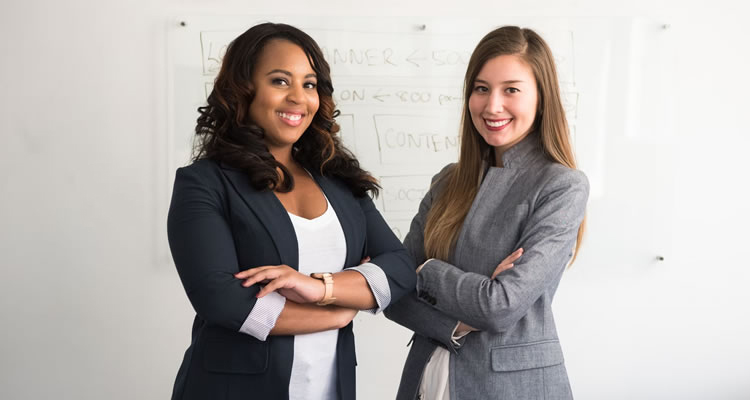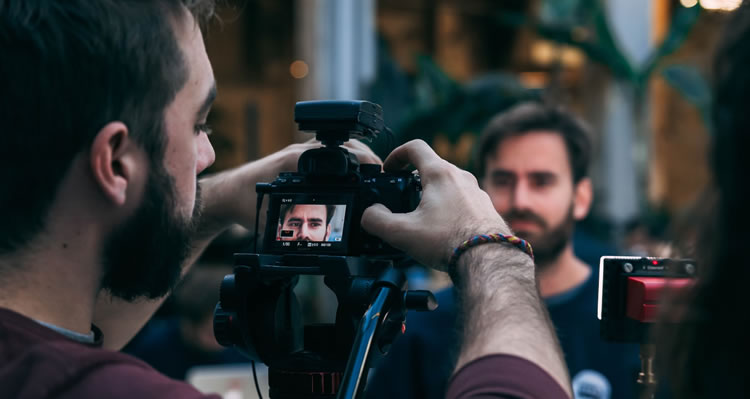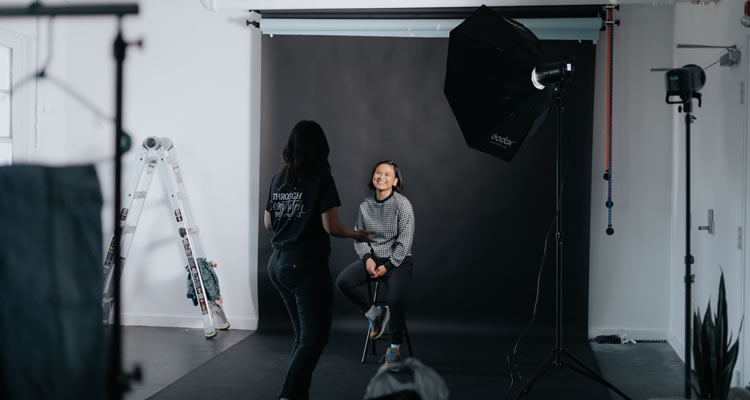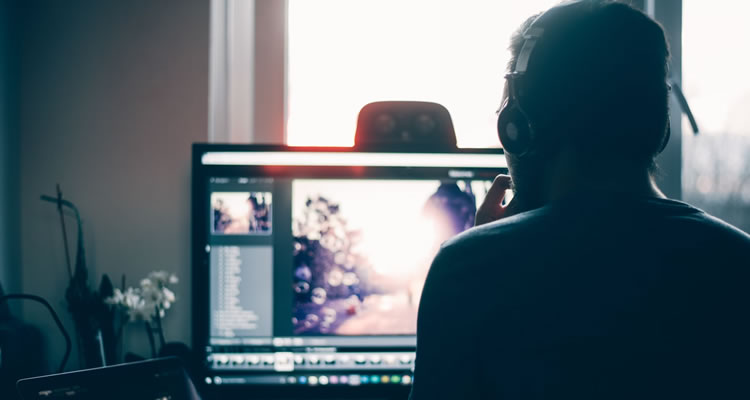The Importance of Headshot Photography in Business
![]() by Fabio Peters
by Fabio Peters

In a world driven by visuals, where first impressions often happen in the blink of an eye, a compelling headshot can be your most potent asset. Headshot photography is more than just capturing a face; it’s about distilling the essence of a person into a single frame. It’s an art form that goes beyond the technicalities of a camera, diving deep into the realm of personality, expression, and storytelling.
Headshot photography is of paramount importance in today’s interconnected society. Whether you’re a professional seeking to create a compelling LinkedIn profile, an aspiring actor looking to land that career-defining role, or an individual aiming to make a lasting impression on social media, the right headshot can be the key to unlocking doors of opportunity. It’s the visual handshake that introduces you to the world, making it an indispensable tool for personal and professional success.
But headshot photography is more than just a means to an end. It’s an art form that marries technical expertise with creative vision. In the hands of a skilled photographer, a headshot session becomes a canvas where personalities are revealed, emotions are captured, and stories are told. It’s an intricate dance between subject and photographer, where the slightest nuances of expression and lighting can create a masterpiece.
What are the types of headshots in photography?
In this blog, we’ll explore the nuances of planning the perfect headshot session, the art of posing and expression, the magic of post-production, and the myriad ways you can use your headshots to leave a lasting impression. Whether you’re a seasoned professional or someone just starting to dip their toes into the world of headshots, there’s something here for everyone. Get ready to uncover the secrets behind those captivating, confidence-boosting portraits that speak volumes without uttering a word.

Corporate Headshots
Corporate headshots are primarily used in the business world. They aim to present an individual in a professional and approachable manner. These headshots are commonly used for business websites, LinkedIn profiles, and company directories. They often portray the subject wearing professional attire, exuding confidence, trustworthiness, and competence.
Actor/Actress Headshots
Actor and actress headshots are essential tools in the entertainment industry. These headshots need to capture the versatility and character range of the performer. They typically focus on the subject’s expressive facial features and can vary from dramatic to friendly, depending on the roles the actor or actress aims to portray.
Model Headshots
Model headshots are geared towards individuals pursuing careers in the modeling industry. These headshots emphasize the subject’s unique features, such as bone structure, skin quality, and eye color. They aim to showcase the model’s potential for different types of modeling work, including fashion, commercial, or editorial.
Social Media Profiles
In the age of social media, personal headshots play a crucial role in shaping one’s online presence. These headshots are tailored for platforms like Facebook, Instagram, Twitter, and others. They often aim to strike a balance between being professional and approachable, reflecting an individual’s personality and interests.
Dating Profiles
When it comes to online dating, a well-crafted headshot can make a significant difference. These headshots should portray the subject authentically, showcasing their personality and style. They often focus on capturing a friendly and genuine expression, helping potential matches get a sense of the person behind the profile.
Personal Branding
Personal branding headshots go beyond just a visual representation; they encapsulate an individual’s brand identity. These headshots are versatile and can be used for various purposes, including personal websites, blogs, or promotional materials. They aim to convey the essence of the person’s personal brand, whether it’s professionalism, creativity, authenticity, or a unique combination of traits.
Headshots come in various forms, tailored to specific purposes and industries. Whether you need a polished corporate headshot or a captivating model headshot, or even a headshot for your dating profile, the type of headshot you choose should align with your goals and the image you want to project to the world.
Planning Your Headshot Session
A successful headshot session requires careful planning and consideration of various elements to achieve the desired outcome.
Begin by researching and reviewing the portfolios of potential photographers. Look for a photographer whose style aligns with your vision and the purpose of your headshots. Examining their previous work will give you insights into their skills and creativity.

Experience and Expertise
Consider the photographer’s experience and expertise, especially in the specific type of headshot you require. Different photographers excel in corporate, actor/actress, or model headshots, so choose one with a track record in your area of interest. Experienced photographers often have a better understanding of posing, lighting, and capturing your unique personality.
Pre-Session Consultation
Before the session, have a detailed consultation with your chosen photographer. Discuss your goals and objectives for the headshots. Are you looking for a friendly and approachable image for your social media profiles, or do you need a more serious and professional look for a corporate headshot? Clear objectives will guide the photographer in capturing the right style and mood.
Wardrobe and Styling Tips
Your photographer can provide valuable advice on wardrobe choices that will enhance your headshots. Depending on your objectives, they may suggest clothing options, colors, and styles that complement your features and the intended mood of the photos. Proper styling can make a significant difference in the final results.
Location and Lighting Considerations
Selecting the right location and lighting conditions is crucial to achieving the desired look for your headshots.

Location
Determine whether your headshots will be taken in a studio, on-location, or in a specific environment that reflects your personal or professional identity. Each setting has its advantages, so discuss this with your photographer to make an informed decision.
Lighting
Lighting plays a pivotal role in headshot photography. Your photographer will assess the available lighting options, such as natural light or studio lighting, to achieve the desired effects. They may also consider factors like soft or dramatic lighting based on your preferences and the purpose of the headshots.
Props and Accessories
Depending on the type of headshots and your objectives, you may consider using props or accessories to enhance your photos.
Props
Props can add personality and context to your headshots. For example, a writer might include a pen and notebook, while an actor could incorporate elements related to their craft. Discuss with your photographer how props can be integrated seamlessly into the composition.
Accessories
Accessories like jewelry, glasses, or hats can also be used strategically to convey your personal style and character. Your photographer can provide guidance on how to use these elements effectively without overwhelming the composition.
By carefully planning these aspects of your headshot session with your photographer, you’ll be well-prepared to create stunning headshots that align with your objectives and make a lasting impression.
The Headshot Photoshoot Process
A successful headshot photoshoot involves several key components that work together to capture the essence of the subject.
Posing and Expression Guidance
During the photoshoot, the photographer takes on the role of a director, guiding the subject to achieve the desired poses and expressions:
The photographer will suggest various poses that flatter the subject’s features and align with the intended style of the headshots. They may focus on body positioning, angles, and posture to convey confidence and approachability.
Expressions are a critical aspect of headshot photography. The photographer will work with the subject to evoke natural and authentic expressions that convey the desired mood. Whether it’s a warm smile, a serious look, or a playful expression, the goal is to capture the subject’s personality and character.
Use of Natural Light vs. Studio Lighting

Natural Light
If natural light is used, the photographer will leverage available daylight to create a soft and flattering illumination. This approach is often chosen for outdoor or on-location headshots, as it can produce a more relaxed and candid feel.
Studio Lighting
Studio lighting provides full control over the lighting environment. Photographers can use various lighting setups, such as softboxes and diffusers, to create the desired mood and eliminate shadows. Studio lighting is often preferred for professional and polished headshots, especially for corporate or actor/actress headshots.
Camera Equipment and Techniques
The photographer employs specialized equipment and techniques to capture high-quality headshots.
Camera Equipment
High-resolution DSLR or mirrorless cameras with interchangeable lenses are commonly used for headshot photography. These cameras allow for precise control over settings like aperture, shutter speed, and ISO to achieve optimal image quality.
Lenses
Portrait lenses with wide apertures (e.g., f/1.8 or f/2.8) are favored for headshot photography. These lenses produce a shallow depth of field, allowing the subject to stand out against a pleasingly blurred background.
Depth of Field
The photographer controls the depth of field to isolate the subject and create a pleasing bokeh effect. This technique draws attention to the subject’s face while gently blurring the background.
Framing and Composition
The photographer pays careful attention to framing and composition, ensuring that the subject is the focal point of the image. They may experiment with different angles and compositions to capture the subject’s unique features.
Collaborative Process with the Photographer
A successful headshot photoshoot is a collaborative effort between the photographer and the subject.
Communication
Effective communication is essential. The photographer will maintain an open dialogue with the subject, discussing ideas, objectives, and preferences. This collaborative exchange ensures that both parties are aligned on the creative direction.
Feedback and Adjustments
Throughout the session, the photographer and subject work together to review and adjust poses, expressions, and lighting. This collaborative process allows for real-time refinement to achieve the best results.
Review and Selection
After the photoshoot, the subject may review the images with the photographer to select the best shots. This collaborative selection process ensures that the final headshots meet the subject’s expectations and objectives.
By following this structured photoshoot process, photographers and subjects can work together to create headshots that capture the subject’s personality, convey the intended message, and leave a lasting impression.
Headshot Photography Post-Production and Editing
After the headshot photoshoot, the journey to creating polished, impactful headshots continues through post-production and editing. This phase involves meticulous attention to detail and creative enhancements to ensure the final images are a true reflection of the subject’s best self.
Image Selection
The first step in post-production is selecting the best shots from the photoshoot. The photographer and subject review the images together or separately to identify the most compelling expressions, poses, and compositions that align with the goals and objectives.
Basic Editing
Once the selection is made, basic editing techniques are applied. This includes adjusting elements like exposure, contrast, color balance, and sharpness to correct any minor imperfections and ensure the images are technically sound.

Retouching and Enhancements
Skin Retouching
One of the common aspects of headshot editing is skin retouching. Retouching techniques are used to smooth out skin tones, reduce blemishes, and create a flawless appearance. However, it’s crucial to strike a balance between a natural look and over-editing, maintaining the subject’s authenticity.
Eye and Teeth Enhancements
The eyes and teeth are focal points in headshots. Enhancements may be applied to make eyes appear brighter and more captivating, and teeth may be subtly whitened for a vibrant smile.
Hair and Wardrobe Adjustments
If necessary, adjustments can be made to hair and wardrobe elements to ensure they look their best. Stray hairs can be removed, and clothing wrinkles can be smoothed out.
Color Grading
Color grading is employed to establish a consistent and pleasing color tone across all selected headshots. This step helps create a cohesive look and feel for the final images.
Maintaining Authenticity
Natural Appearance
It’s essential to maintain the subject’s natural appearance throughout the editing process. Overly aggressive retouching or enhancements can lead to an artificial and inauthentic look that may not serve the subject’s goals or intentions.
Consultation with the Subject
Collaboration between the photographer and subject is crucial during post-production to ensure that the subject’s vision and preferences are respected. The subject’s feedback is valuable in striking the right balance between enhancements and authenticity.
Retaining Unique Features
Authenticity in headshots means preserving unique facial features, expressions, and character traits. Retouching should enhance the subject’s best qualities while still allowing their individuality to shine through.
Final Approval
Before finalizing the headshots, the subject often has the opportunity to review and approve the edited images. This step ensures that the final headshots align with their expectations and self-image.
In the world of headshot photography, post-production and editing are transformative steps that elevate the quality and impact of the images. When done with care and a commitment to authenticity, they result in headshots that not only look great but also resonate with the subject’s true self and objectives.
Headshot Photography Deliverables
After a successful headshot photoshoot and post-production process, the final step is delivering the finished images to the client. This involves providing various deliverables that cater to the client’s specific needs and usage.
Digital vs. Print Headshots
Digital headshots are delivered in electronic formats, such as JPEG or PNG files. They are versatile and can be easily shared, uploaded to websites or social media profiles, and used for digital applications. Digital headshots are ideal for online portfolios, email signatures, and online marketing.
Print headshots are prepared for physical reproduction. These may be provided in high-resolution digital formats suitable for professional printing. Clients who require printed headshots often include actors, models, or professionals who need hard copies for casting calls, auditions, or promotional materials.
File Formats and Resolution
Headshot photographers typically provide images in standard file formats like JPEG, PNG, or TIFF. JPEG is the most common choice due to its compatibility and efficient compression, while PNG offers higher quality and a transparent background option. TIFF files are uncompressed and retain the highest quality, making them suitable for professional printing.
The resolution of digital headshots is an essential consideration. Higher resolution images (e.g., 300 DPI or more) are suitable for print purposes as they ensure sharp and clear results. For online use, a lower resolution (e.g., 72 DPI) is sufficient and reduces file size for faster web loading.
Usage Rights and Licensing
Usage Rights: Usage rights dictate how and where the client can use the headshots. Different headshot sessions may come with varying usage rights agreements. Some common types of usage rights include:
Personal Use: Allows the client to use the headshots for personal purposes, such as social media profiles or personal branding, but not for commercial use.
Commercial Use: Permits the use of headshots for commercial purposes, such as marketing materials, advertisements, or corporate branding.
Exclusive Use: Grants the client exclusive rights to use the headshots, preventing the photographer from selling or licensing them to others during a specified period.
Licensing: Licensing terms specify the duration and scope of how the client can use the headshots. These terms may include:
Non-Exclusive License: Allows the client to use the headshots, but the photographer retains the right to license them to others.
Exclusive License: Grants the client exclusive rights to use the headshots for a specific period, during which the photographer cannot license them to others.
Understanding usage rights and licensing is crucial, as it defines how clients can leverage their headshots legally and whether they can be used in multiple contexts or exclusively.
Headshot photography deliverables encompass digital and print formats, file formats and resolution suitable for the intended use, and clear usage rights and licensing agreements that govern how the images can be employed. Tailoring the deliverables to the client’s specific needs ensures that the headshots serve their intended purpose effectively.
Tips for a Successful Headshot Session
Breathing Exercises
Practice deep breathing exercises before and during the session to help calm nerves and reduce tension. Inhale slowly for a count of four, hold for four, and exhale for four.
Visualization
Visualize a positive outcome and think about the message you want your headshot to convey. This can boost your confidence and help you project the right expressions.
Positivity
Surround yourself with positivity before the session. Listen to your favorite music or engage in light conversation to put yourself at ease.
Trust the Photographer
Remember that your photographer is experienced and skilled in capturing your best angles and expressions. Trust their guidance and direction throughout the session.
Hydration
Drink plenty of water in the days leading up to your session. Well-hydrated skin looks healthier and more vibrant, which will reflect in your headshots.
Skincare
Follow your regular skincare routine leading up to the session, but avoid trying new products or treatments close to the date. Keep your skin clean, moisturized, and free of excessive sunburn or blemishes.
Minimize Makeup
If you wear makeup, keep it simple and natural. Avoid heavy, trendy makeup that may not stand the test of time. A professional makeup artist can help ensure you look your best without appearing overdone.
Lips
Moisturize your lips to prevent them from looking dry or chapped in the photos. You can also bring a lip balm to reapply between shots if needed.
Practice Makes Perfect
Practice Posing
Spend some time practicing different poses in front of a mirror or with a friend. This will help you become more comfortable and confident during the actual session.
Facial Expressions
Experiment with various facial expressions to find the ones that best convey your desired message. Practice smiling naturally and making subtle adjustments to your expression.
Clothing
Try on your chosen outfits in advance to ensure they fit well and make you feel confident. Make any necessary adjustments, such as ironing or steaming, to eliminate wrinkles or creases.
Relaxation Techniques
Practice relaxation techniques like meditation or yoga in the days leading up to the session. These practices can help you stay calm and composed during the shoot.
Remember that headshot photography is a collaborative process, and it’s okay to take breaks, communicate with your photographer, and make adjustments as needed. With preparation, confidence, and a positive mindset, you can achieve successful headshots that reflect your true self and meet your goals.
Conclusion
In this article, we’ve explored the many facets that contribute to the art of capturing one’s essence. From the diverse types of headshots, including professional and personal, to the intricate planning process, and the dynamic photoshoot itself, each element plays a pivotal role in the creation of stunning and meaningful portraits.
The array of headshot possibilities is endless, whether you’re seeking to make a lasting impression in the corporate world with a polished business headshot, looking to capture the multifaceted facets of an actor’s or actress’s personality, or showcasing your versatility as a model. Personal headshots, on the other hand, offer a canvas for self-expression, whether it’s on social media, in the quest for love on dating profiles, or in crafting your personal brand.
As you embark on your headshot photography journey, may these insights and tips serve as your compass. Whether you’re stepping into the spotlight for the first time or refreshing your professional image, may your headshots resonate with your essence, empower your goals, and make a lasting impression. The world awaits the story that your headshots will tell.
Editorial Process:
The reviews on this site are crafted through diligent research, collecting expert insights, and drawing from genuine, real-world experience. You can learn more about our editorial process here.
It’s worth noting that certain links within this article may be affiliate links. This means that if you choose to purchase a paid plan through these links, we may receive compensation at no extra cost to you. Rest assured, these are products and services that we have personally tested, used, and wholeheartedly endorse. We want to emphasize that our website is not intended to offer financial advice. Your trust and satisfaction are our top priorities.
Table of Contents
What are the types of headshots in photography?
Planning Your Headshot Session
Location and Lighting Considerations
The Headshot Photoshoot Process
Use of Natural Light vs. Studio Lighting
Camera Equipment and Techniques
Collaborative Process with the Photographer
Headshot Photography Post-Production and Editing
Headshot Photography Deliverables


